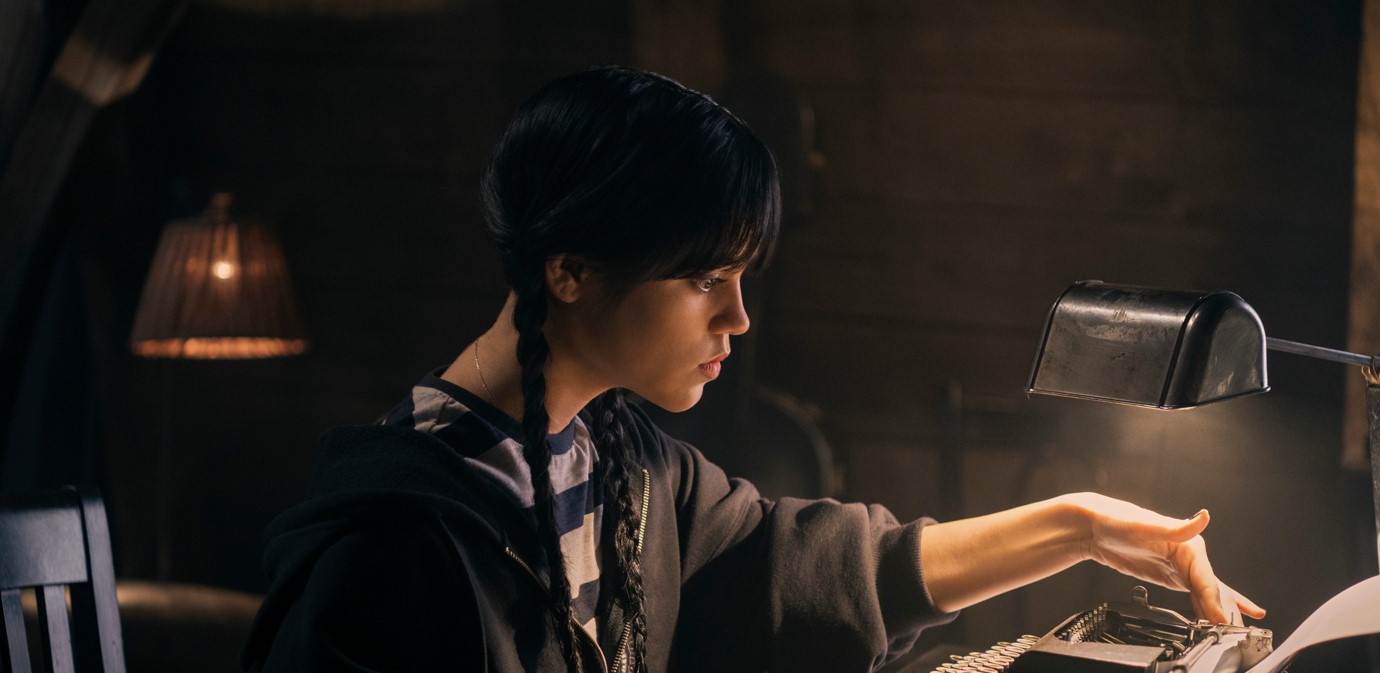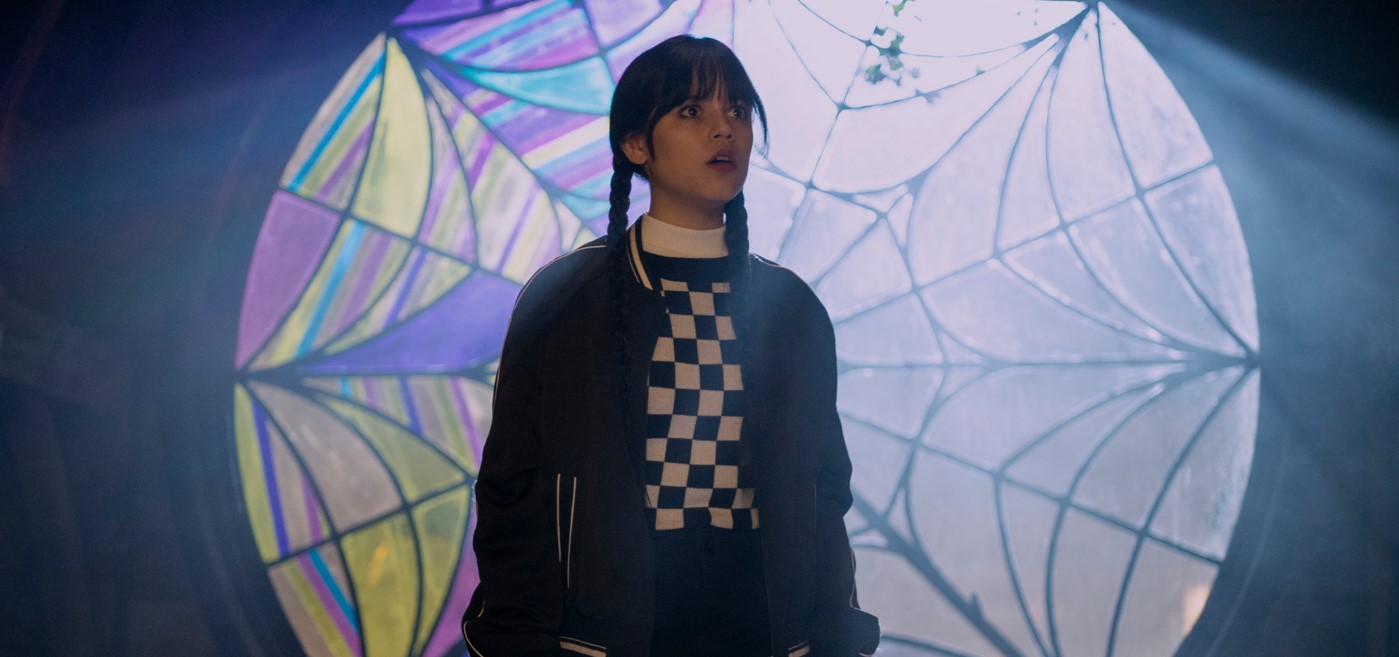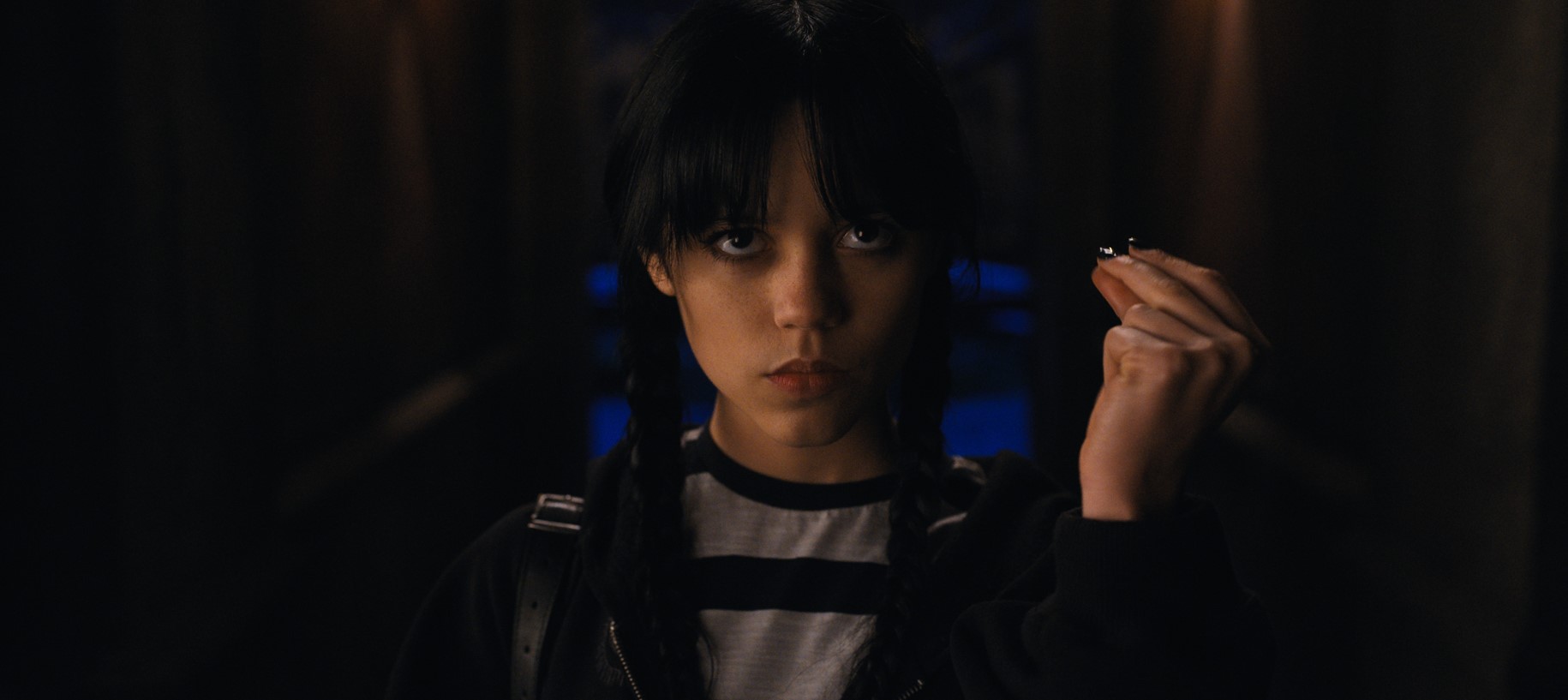‘Wednesday’ is the Netflix adaptation of the Addams Family, characters created by American cartoonist Charles Addams. The plot predominantly revolves around the titular character (Jenna Ortega) as she arrives at Nevermore Academy, a boarding school for teenagers with special abilities. There, she meets Enid Sinclair (Emma Myers), a bubbly, cheerful girl with colorful hair and clothes. Their first meeting leaves much to be desired. When Enid goes to hug Wednesday, the latter backs away. This prompts Wednesday’s mother, Morticia (Catherine Zeta-Jones), to explain that Wednesday is allergic to color. If you are wondering whether this is true, we got you covered. SPOILERS AHEAD.
Black and White Legacy: A Tradition Beyond Color
The pilot episode, directed by Tim Burton, has many memorable scenes. But the introduction scene between arguably the two most important characters in the show is quite exceptional. As the Addams walks in, a very colorfully decorated room with a rainbow window greets them, prompting Wednesday’s father, Gomez (Luis Guzmán), to observe how vivid everything is. When Morticia states that Wednesday is allergic to color, a curious Enid peers at the other girl and asks what happens to her when she is exposed to color. In response, Wednesday drily states, “I break out into hives, and the flesh peels off my bones.” This leads Principal Weems to assure her that they have specially ordered her a uniform.
This becomes a recurring motif throughout the season, with characters wondering why Wednesday appears in black and white. Ajax, a fellow student at Nevermore, even compares her to an Instagram filter.

In an interview with USA Today, Ortega recalled how she felt when she first read about her response to Enid in the script. “I’ll remember that for the rest of my life,” she said. “I don’t know, maybe it’s the flesh. It really got me.”
Charles Addams’ original cartoon panels were obviously in black and white, and the family’s first on-screen appearance, the 1960s’ ABC TV series, was also developed in black and white. Even after the advent of color in films and TV shows, the very idea of depicting these characters in colorful clothes is inherently wrong. The lack of color actually adds depth to their macabre personalities.
The Netflix series has dutifully continued this tradition. In this rendition, Wednesday represents a form of fearlessness that most people wish they have. “She’s a truth-teller,” noted series co-creator, Alfred Gough. “She’ll say the things everybody else wants to say, and she can get away with it,”
Gough and his partner Miles Millar’s experiences with their own daughters helped them create a modern rendition of Wednesday. “It was definitely a personal motivation as well, in terms of how we could express our fatherhood in that character and also make a show that our girls would love,” Millar told the same outlet.
According to Ortega, even though her character’s relationship with her mother seems confrontational, Wednesday has inherited much from Morticia. “Young girls growing up learn so much from their moms, whether they intend to or not, down to the way you get ready in the morning, certain mannerisms or traits that you have,” the actress stated. “And women tend to be closer to one another than they realize.”

Tim Burton, who directed four out of eight episodes of season 1 said that he could relate to Wednesday’s black-and-white perspective. “I was a teenage boy version of that myself,” the director explained. “Honestly, all those weird feelings kept flooding back to me of being in school and teachers and society and all that stuff.”
So, it’s safe to conclude that Wednesday doesn’t actually have an allergy to color. Instead, she dislikes color, and it is very much a part of her personality. The series creators ensured that this aspect of her character would stand out by often surrounding her with vivid colors.


You must be logged in to post a comment.